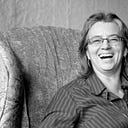Member-only story
Story Structure You Should Know

I always view the seven-point plot as something that rides along inside of most of the other story structures that you already know. This is just going to be an overview of the seven-point plot structure. If you’d like to go into it in a lot more detail, you can pick up Business for Breakfast Volume 3: The Professional Storyteller.
I learned about the seven-point plot structure from Kristine Kathryn Rusch and Dean Wesley Smith. There are other forms of it, but I honestly find this one the most useful when it comes to writing, and applying it to my writing.
Amazingly enough, there are seven parts to this structure.
1. A character
2. In a setting
3. With a problem
4. Trying
5. Failing
6. Climax
7. Denouement
One of the things I like about this structure is that it works both at a small scale as well as on a larger one, by which I mean that this works for short fiction as well as for huge arcing novels and novel series.
You start with a character. Because honestly, that’s where stories start. That’s what readers remember and want to interact with. Characters. Beings who are interesting. Make sure that both your main character and your villain are equally as interesting. And that every side character is the hero/heroine of their story.
In a setting. This is honestly where a lot of beginning writers fall down. They come up with these great characters who have all these likes, dislikes, dreams, and fears. They know their character’s preferences, what brand of soy milk they prefer in their latte.
And yet, they place those colorful, vibrant, alive people in the equivalent of a white room. Or worse, a genericroom.
Who cares if the room has three chairs and a sofa? The setting needs to be as interesting as your characters.
One of the best ways to do that is to make sure that all setting description comes from your character’s voice.
Think about it. Generally speaking, everything that ever gets described in your book is always from the point of view of…
